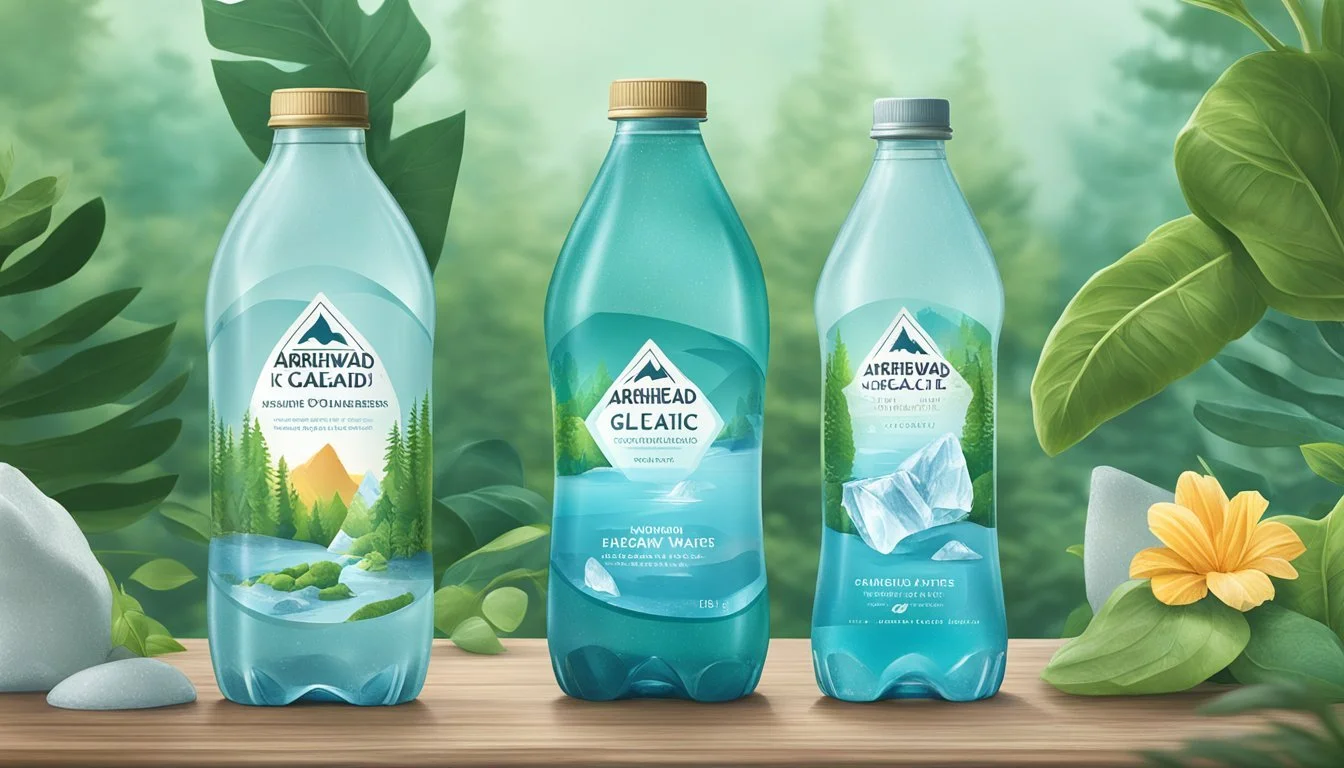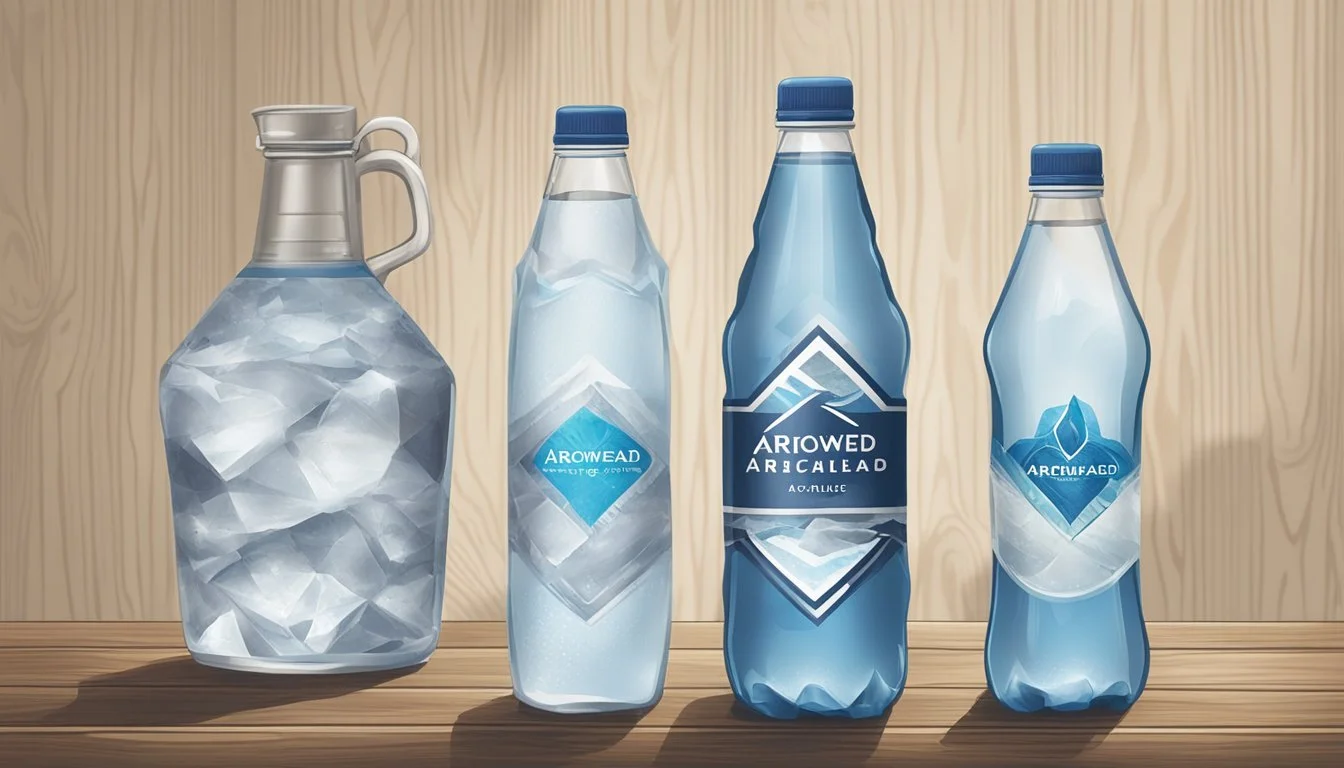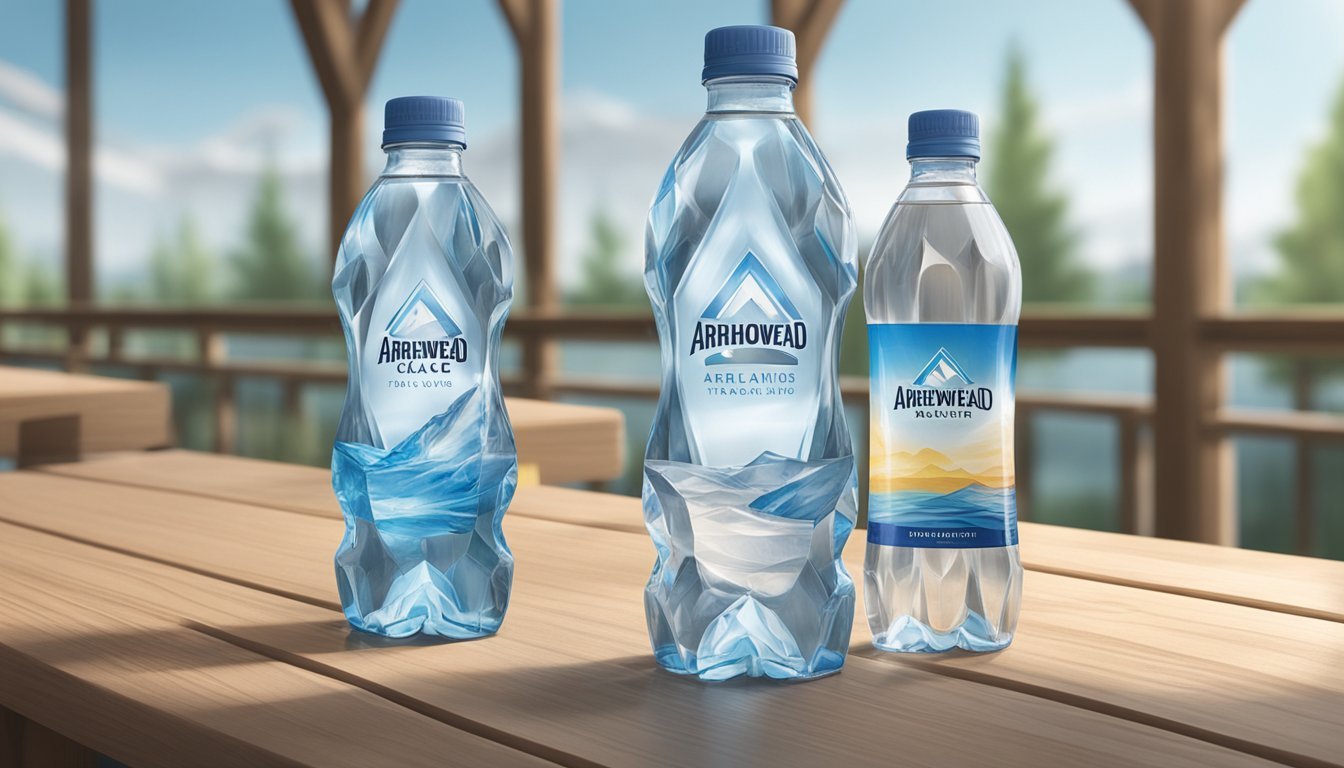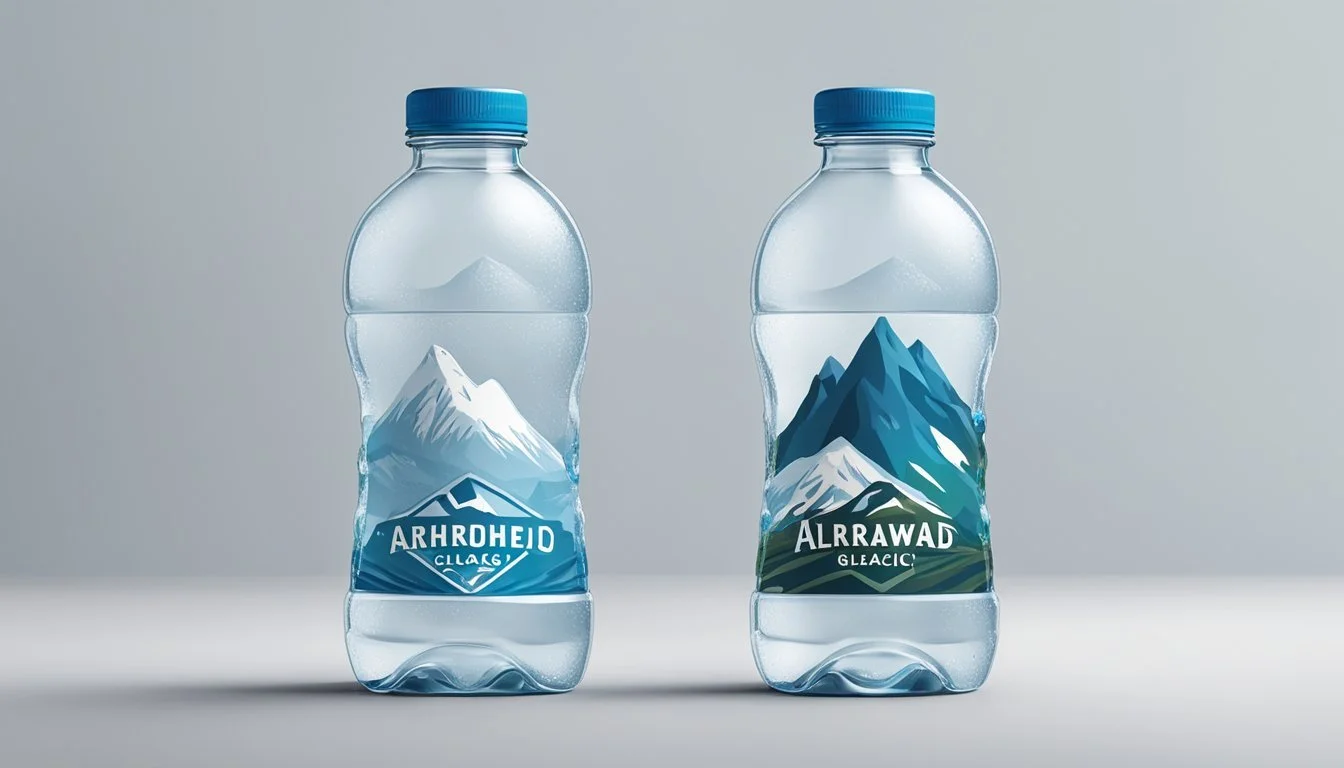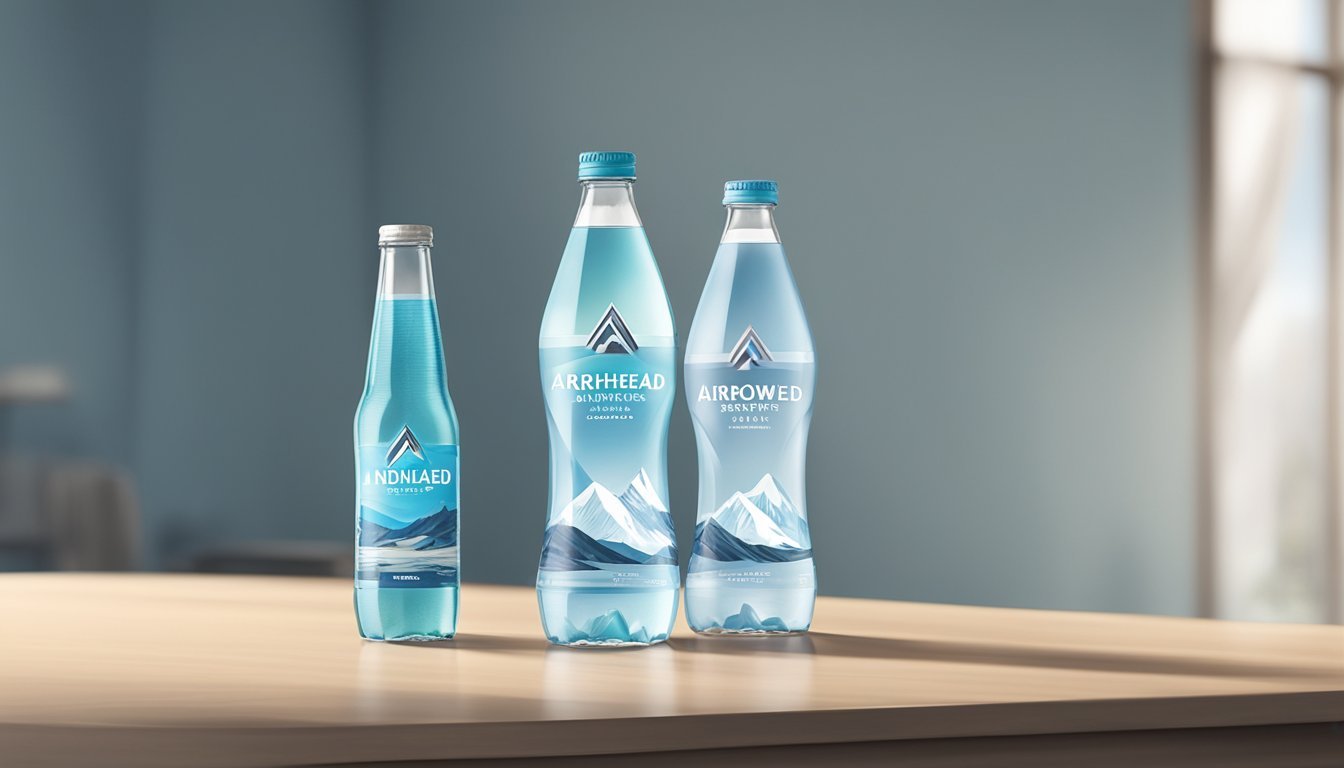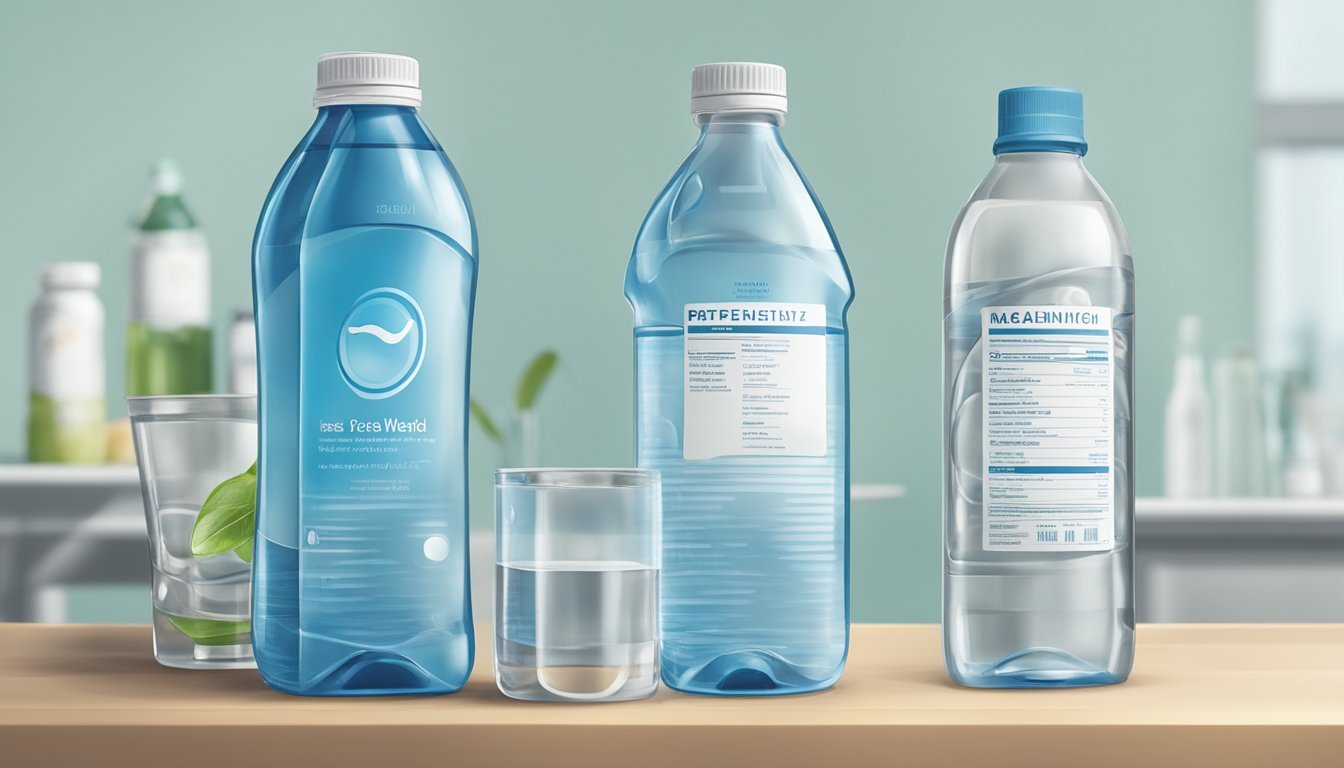Arrowhead vs. Icelandic Glacial
The Ultimate Bottled Water Comparison
Bottled water is a staple in many households and offices, providing a convenient source of hydration. However, the quality and taste of bottled water can vary significantly between brands. Two prominent names in the bottled water industry are Arrowhead and Icelandic Glacial. Arrowhead, known for sourcing its water from mountain springs in the western United States and Canada, offers a widely distributed and affordable option. Despite its mass-production scale, Arrowhead's taste and quality are often described as satisfactory, though not exceptional.
Icelandic Glacial, on the other hand, has garnered attention for its exceptionally pure water sourced from Iceland's legendary natural springs. The brand's commitment to environmental sustainability, along with its water's distinct crispness, is highly valued among consumers. Icelandic Glacial's process of capturing natural spring water without altering its mineral balance allows the brand to deliver a product with a taste often preferred by those who prioritize the purity and natural composition of their water.
When comparing Arrowhead and Icelandic Glacial, it is important to consider the origin, mineral content, taste, and environmental impact of the brands. While both serve the same basic need for hydration, their approach to bottling and distributing water, along with their respective brand ethos, significantly shapes consumer perception and preference.
Origin and Source
Selecting a bottle of water often depends on the consumer's preference for the water's origin and source. Both Arrowhead Mountain Spring Water and Icelandic Glacial Water have distinct sources that contribute to their unique qualities.
Arrowhead Mountain Spring Water
Arrowhead sources its water from mountain springs located in the western regions of the United States and Canada. Their natural spring water is collected from a variety of mountain springs, which is then bottled. Each source offers a different mineral composition, which can influence the taste and quality of the water.
Icelandic Glacial Water
Icelandic Glacial Water's origin is the remote Ölfus Spring in Iceland, a country known for its pristine natural environment. The spring is naturally replenished by a natural filtration of rain and snow melt in a time-intensive process. Icelandic Glacial touts itself as having some of the purest groundwater in the world, untouched by human hands and unexposed to airborne pollutants.
Production and Purification Process
The purification methods of bottled water are critical for ensuring safety and quality. Each brand employs distinct processes to deliver a product that meets and often surpasses regulatory standards.
Filtration Techniques
Arrowhead water originates from springs and utilizes a multiphase filtration system that includes reverse osmosis and other advanced filtration methods. Reverse osmosis is a significant step in their process, removing impurities to decrease the total dissolved solids (TDS) and any potential PFAS chemicals or contaminants to levels that comply with or exceed EPA guidelines.
Icelandic Glacial, on the other hand, boasts naturally low TDS and nearly non-existent PFAS chemicals given Iceland's pristine environment. The brand emphasizes their water's passage through volcanic rock, which naturally filters impurities while imbuing the water with minerals. However, they also uphold modern filtration standards to ensure consistent purity and taste, which likely includes processes to remove any microplastic contamination.
Bottling Standards
Both companies adhere to strict bottling standards to preserve the purity of their water post-filtration. At the bottling facilities, water undergoes additional quality checks, with emphasis on maintaining a contaminant-free environment to prevent the introduction of microplastics and other impurities.
Arrowhead applies rigorous quality control protocols that align with both EPA standards and industry best practices. This ensures their water maintains its purity from filtration to the final product on shelves.
Icelandic Glacial’s bottling process prides itself on environmental sustainability, operating entirely on geothermal and hydroelectric power, thus minimizing carbon footprint. Their bottling takes place in a state-of-the-art facility that mirrors the high standards set by international regulatory bodies.
Composition and Health Benefits
When comparing bottled water such as Arrowhead and Icelandic Glacial, the composition and health benefits largely depend on the mineral content and the presence of electrolytes, which contribute to hydration and overall wellness.
Mineral Content Comparison
Arrowhead: Sourced from springs, Arrowhead water contains natural minerals like calcium and magnesium. The levels of these minerals can vary based on the source spring. Arrowhead is considered a mineral water due to these naturally occurring minerals, which can contribute to the dietary intake of these essential elements.
Icelandic Glacial: Known for its high alkaline pH of 8.4, which is indicative of its mineral-rich composition, Icelandic Glacial also boasts a significant silica content. This mineral is often linked with benefits for skin, hair, and nails. Icelandic Glacial is an alkaline water, which some studies suggest may help in maintaining the body's acid-base balance.
Hydration and Electrolytes
Both Arrowhead and Icelandic Glacial offer hydration benefits along with varying levels of electrolytes:
Arrowhead: While not specifically marketed as an electrolyte water, the naturally occurring minerals in Arrowhead can contribute to its electrolyte profile, aiding in hydration and replenishment of minerals lost through sweat.
Icelandic Glacial: It naturally contains electrolytes such as calcium and magnesium. As with other electrolyte waters, these compounds play a crucial role in bodily functions, including hydration, muscle function, and nerve transmission.
Both brands lack significant levels of heavy metals, ensuring safety and quality in their bottled waters.
Taste and Consumer Preference
The experience of water may seem universal, yet subtle nuances distinguish one brand from another in the eyes of consumers and water sommeliers alike. Taste perceptions and consumer choices are shaped by the unique flavor profiles of each brand and the prevailing market trends.
Flavor Profile
Icelandic Glacial water is known for its pristine and clean taste, which many attribute to its source: the Icelandic glaciers. The process of trickling through ancient lava fields imparts a natural filtration, leading to a soft, pure taste often described as being slightly alkaline.
Arrowhead sources its water from mountain springs across the western United States and Canada. This brand presents a more varied flavor profile, which some consumers report as unremarkable. However, taste is subjective, and some people prefer the familiar, straightforward taste of Arrowhead reflected in its regional popularity.
Market Trends
Recent trends among consumers indicate an increasing preference for water brands that offer a combination of purity, ecological sustainability, and health benefits. Icelandic Glacial, backed by numerous positive reviews for its taste, aligns with these trends due to its clean-tasting water and commitment to environmental sustainability.
On the other hand, Arrowhead has maintained a consistent consumer base, with its affordability and accessibility being key factors. Although not often highlighted by water sommeliers for outstanding taste, the brand remains a staple in many households and venues due to its reliable presence in the market.
Packaging and Sustainability
When evaluating the packaging and sustainability of Arrowhead and Icelandic Glacial bottled water, one must consider the materials used in the bottles and the overall environmental impact of their products.
Bottle Materials
Arrowhead, which offers plastic bottles, is a brand continuously looking to improve its environmental footprint. They have incorporated recycled plastic in their bottles to reduce plastic waste. The brand encourages consumers to recycle their products to further minimize environmental impact.
Icelandic Glacial takes a different approach, with their packaging choices including 100% recyclable materials. They provide glass bottles as an option for consumers, catering to those who prefer a reusable and potentially more sustainable alternative.
Environmental Impact
The environmental repercussions of bottled water production are significant, with plastic waste being a primary concern. Arrowhead places an emphasis on using recycled materials to lessen its impact. The brand has initiatives to increase the recyclability of its products, however, the issue of single-use plastic remains.
Icelandic Glacial's commitment to sustainability is evident in its overall approach. Their operations boast environmentally friendly packaging, and they have received sustainable certifications, outlining their dedication to making a positive environmental impact. They also offer 5L bulk packaging, which reduces the need for single-use smaller bottles, promoting the use of refillable containers.
Branding and Market Presence
Arrowhead and Icelandic Glacial have distinct branding strategies and market presence, reflecting their unique identities and consumer perceptions. The way these two brands present themselves and penetrate global markets is clearly shaped by these strategies.
Marketing Strategies
Arrowhead, part of the Nestlé family, capitalizes on its heritage and regional familiarity, particularly in the western United States. Its marketing emphasizes the brand's connection to its natural source in the mountains and its longstanding history. Bold and earth-toned labeling resonates with consumers who value tradition and simplicity.
On the other hand, Icelandic Glacial exudes a sense of premium quality and purity. The brand’s high-end positioning reflects in its sleek packaging design and its messaging that highlights the remote and pristine Icelandic environment. Icelandic Glacial’s image is further enhanced in the public eye by its certifications for environmental and sustainability practices.
Global Reach
While Arrowhead enjoys a strong market presence across the United States, bolstered by Nestlé's extensive distribution network, Icelandic Glacial boasts an international footprint, aiming to deliver the "cleanest water in the world" beyond Iceland's borders.
Arrowhead
United States focus: Largely regional with dominance in the Western U.S.
Supported by Nestlé: Benefit from the extensive distribution and branding know-how.
Icelandic Glacial
Export-oriented: Targets international markets, including a notable online presence on retail platforms.
Celebrity endorsements and strategic partnerships: Leverage global influencers to maintain a luxury image.
Both companies align with the International Bottled Water Association guidelines, ensuring their branding also promotes the safe and ethical bottling of water – an important factor in today’s environmentally-conscious market. While Coca-Cola does not directly own these specific brands, the behemoth company's comprehensive reach in the bottled water market does set an influential backdrop for the competitive dynamics Arrowhead and Icelandic Glacial navigate.
Safety and Regulatory Compliance
When evaluating bottled water brands like Arrowhead and Icelandic Glacial, safety and regulatory compliance are of paramount importance. They ensure that the water consumers drink meets or exceeds standards for contaminants and is safe for consumption.
Quality Control
Arrowhead:
Lead and contaminants: Ensures that lead levels and other contaminants are below detectable levels using rigorous quality control measures.
Safety measures: Adopts comprehensive safety protocols to minimize the risk of corporate malfeasance that could compromise water quality.
Icelandic Glacial:
Purity claim: Boasts delivering some of the cleanest water, with stringent tests to back up this claim.
Contaminant control: Employs state-of-the-art techniques to ensure the water is free from harmful levels of contaminants.
Government Regulations
Arrowhead:
Regulation oversight: Subject to U.S. FDA regulations for bottled water, which includes testing for safety and contaminants.
Regulatory compliance: Adheres to federal and state regulations, ensuring their water meets all legal safety requirements. Regulatory findings are accessible to the public, reflecting transparency and compliance.
Icelandic Glacial:
Regulatory standards: Meets the standards of both the U.S. and Icelandic governments, with a practice of openly disclosing water quality reports.
International regulation: Abides by international safety standards, which may include analysis for various contaminants to certify global distribution safety.
Availability and Accessibility
When selecting a bottled water, consumers consider how easily they can purchase the product and whether it fits their budget. Arrowhead and Icelandic Glacial offer distinct distribution channels and pricing structures, reflecting their accessibility to the average customer.
Distribution Channels
Arrowhead Mountain Spring Water is primarily distributed within the United States, particularly in the western states. It can be found in a variety of grocery stores, supermarkets, and convenience stores, making it widely available to a large customer base. Arrowhead sources its water from several springs across the western U.S. and Canada.
On the other hand, Icelandic Glacial is known for its international reach, tapping into markets across the globe due to its unique origin and branding. Despite this, Icelandic Glacial is still readily available in the United States, often found in premium grocery stores and speciality retailers.
Pricing and Affordability
The price of bottled water is a key aspect of its accessibility. Arrowhead, being one of the more mass-produced bottled waters, offers a low-cost alternative, making it an affordable option for a wide range of consumers. Here's a quick breakdown of Arrowhead's pricing:
Single Bottle (500ml): typically under $1
Multi-Pack (24x500ml): usually between $3 to $5
Icelandic Glacial, known for its promise of high purity, tends to be priced higher compared to Arrowhead. The brand positions itself as a premium product, which is reflected in its cost:
Single Bottle (500ml): around $2 to $3
Multi-Pack (24x500ml): typically $20 to $30
Both brands are strategically priced to appeal to their target markets, with Arrowhead focusing on budget-conscious consumers and Icelandic Glacial targeting those willing to pay a premium for their bottled water.
Comparison and Conclusion
When consumers choose between Arrowhead and Icelandic Glacial bottled waters, they encounter two distinct profiles in taste, source, and availability. Arrowhead, sourced from mountain springs across the western U.S. and Canada, is known for its mass-produced, low-cost water. It does not contain carbonation, offering consumers a still water experience.
Icelandic Glacial, on the other hand, stakes its reputation on providing some of the cleanest still water available globally. It is devoid of both carbonation and artificial additives, promising a pure tasting experience. However, it might be less accessible than its counterpart due to limited distribution.
Feature Arrowhead Icelandic Glacial Source Mountain springs Natural Icelandic springs Carbonation None (still water) None (still water) Distribution Widely available More exclusive Unique Selling Proposition Affordability Cleanliness
Arrowhead may appeal to shoppers seeking a convenient and cost-effective option available in various locations. Conversely, Icelandic Glacial caters to those placing a premium on the purity of their water, even if it requires a bit more effort to find. When determining which bottled water is better, consumers are encouraged to consider their personal priorities—be it taste, source purity, or the environmental policies of the brand—before making a decision.




